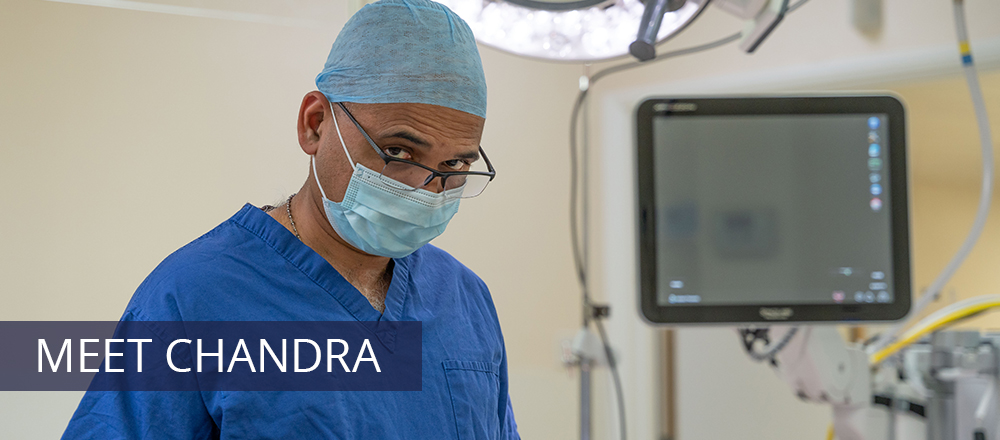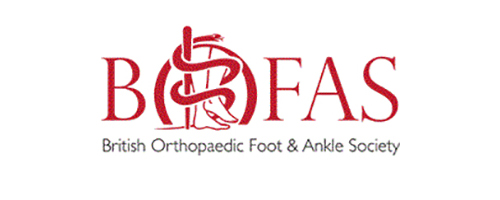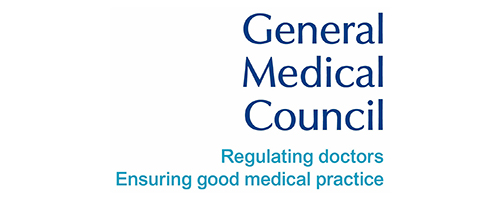The information outlined below on common hip conditions and treatments is provided as a guide only and it is not intended to be comprehensive. Discussion with Mr Chandra Rao is important to answer any questions that you may have.
For information about any additional conditions not featured within the site, please contact us for more information.
COMMON HIP CONDITIONS
Osteoarthritis
The symptoms of osteoarthritis can vary greatly from person to person, but if it affects the hip, it will typically cause:
• mild inflammation of the tissues in and around the hip joint
• damage to cartilage – the strong, flexible tissue that lines the bones
• bony growths (osteophytes) that develop around the edge of the hip joint
This can lead to pain, stiffness and difficulty doing certain activities.
There’s no cure for osteoarthritis, but the symptoms can be eased using a number of different treatments. Surgery isn’t usually necessary.
Less Common Causes
Less commonly, hip pain may be caused by:
• the bones of the hip rubbing together because they’re abnormally shaped – a condition called femoroacetabular impingement
• a tear in the ring of cartilage surrounding the socket of the hip joint – known as a hip labral tear
• hip dysplasia – where the hip joint is the wrong shape, or the hip socket isn’t in the correct position to completely cover and support the top of the leg bone
• a hip fracture – this will cause sudden hip pain and is more common in older people with weaker bones
• an infection in the bone or joint, such as septic arthritis or osteomyelitis – see your GP immediately if you have hip pain and fever
• reduced blood flow to the hip joint, causing the bone to break down – a condition known as osteonecrosis
• inflammation and swelling of the fluid-filled sac (bursa) over your hip joint – a condition called bursitis
• a hamstring injury
• an inflamed ligament in the thigh, often caused by too much running – known as iliotibial band syndrome
When to seek Medical Advice
Hip pain often gets better on its own, and can be managed with rest and over-the-counter painkillers, such as paracetamol and ibuprofen.
However, see your GP if:
• your hip is still painful after one week of resting it at home
• you also have a fever or rash
• your hip pain came on suddenly and you have sickle cell anaemia
• the pain is in both hips and other joints as well
Go straight to hospital if:
• the hip pain was caused by a serious fall or accident
• your leg is deformed, badly bruised or bleeding
• you’re unable to move your hip or bear any weight on your leg
• you have hip pain with a temperature and feel unwell
Overactivity
If your hip pain is related to exercising or other types of regular activity:
• cut down on the amount of exercise you do if it’s excessive
• always warm up before exercising and stretch afterwards
• try low-impact exercises, such as swimming or cycling, instead of running
• run on a smooth, soft surface, such as grass, rather than on concrete
• make sure your running shoes fit well and support your feet properly
OSTEOARTHRITIS
Osteoarthritis is by far the most common form of arthritis. It is estimated that 25% of females and 16% of males over the age of 60 are symptomatic from osteoarthritis. Over 55,000 hip replacements are performed in the UK each year to treat osteoarthritis. This page concentrates on osteoarthritis.
OA is a degenerative disorder in which there is progressive loss of articular (surface) cartilage accompanied by new bone formation and capsular fibrosis (stiffening). In effect, this is ‘wear and tear’ arthritis. Many joints can be affected or just one.
There are 2 basic types of osteoarthritis; primary and secondary:
PRIMARY
• No obvious cause
• Many joints involved including fingers, big toe, knees, spinal facet joints
• Usually starts in the hands
• Mainly postmenopausal women
• Familial; i.e. can be inherited
• Same pathology as single joint osteoarthritis
SECONDARY
• Estimated 80% of all OA
• Normal cartilage having to cope with an abnormal load
• Abnormal cartilage having to cope with a normal load
• Cartilage break-up occurs due to defective subchondral bone (bone beneath the articular cartilage)
RHEUMATOID ARTHRITIS
Rheumatoid Arthritis is a condition of unknown cause where the lining membrane (the synovium) of joints becomes inflamed. Damage to the joint surfaces follows, resulting in the destruction of the lining cartilage; the joint becomes painful and arthritic. Many joints can be involved, especially those in the hands and feet, but the larger joints such as the hip and knee are also commonly affected.
CAUSES
There is no obvious cause of primary osteoarthritis; causes of secondary OA include:
• Previous trauma (fracture, dislocation and cartilage injuries)
• Developmental disorders causing abnormal anatomy (e.g. hip dysplasia)
• Childhood hip conditions such as Perthes’ Disease
• Miscellaneous conditions such as avascular necrosis
SYMPTOMS
The overwhelming symptom from hip arthritis is pain. The nerve supply to the hip joint is complex, and as a result pain that comes from the hip can be felt in several different sites. Commonly, pain is felt in the groin, but pain can also be experienced down the inside of the leg, into the knee and sometimes down to the ankle. It can also be felt in the buttock, in the top of the thigh, and rarely in the back.
The pain from hip OA is made worse by activities such as walking for any distance and can often disturb sleep. As a result of joint stiffness patients often have difficulty putting on their shoes and socks.
TREATMENT OPTIONS
Many patients with arthritic hips do not need a hip replacement. There are many ways of coping with the pain from hip arthritis; they include:
• Simple painkillers
• Anti-inflammatory medication
• Weight reduction
• Activity modification
• Using a walking stick (using the stick on the SAME side)
• Physiotherapy
• Steroid injection into the hip joint; usually a day case procedure
However, in the majority of cases there comes a point when these are insufficient and the amount of pain and its impact on lifestyle become intolerable. Hip replacement then becomes a sensible treatment option.
Avascular necrosis is the death of bone tissue due to a lack of blood supply. Also called osteonecrosis, avascular necrosis can lead to tiny breaks in the bone and the bone’s eventual collapse. The blood flow to a section of bone can be interrupted if the bone is fractured or the joint becomes dislocated. Avascular necrosis is also associated with long-term use of high-dose steroid medications and excessive alcohol intake.
Anyone can be affected by avascular necrosis. However, it’s most common in people between the ages of 30 and 60. Because of this relatively young age range, avascular necrosis can have significant long-term consequences.
SYMPTOMS OF AVASCULAR NECROSIS
Many people have no symptoms in the early stages of avascular necrosis. As the condition worsens, your affected joint may hurt only when you put weight on it. Eventually, the joint may hurt even when you’re lying down. Pain can be mild or severe and usually develops gradually. Pain associated with avascular necrosis of the hip may be focused in the groin, thigh or buttock. In addition to the hip, the areas likely to be affected are the shoulder, knee, hand and foot. Some people develop avascular necrosis bilaterally — for example, in both hips or in both knees.
CAUSES OF AVASCULAR NECROSIS
Avascular necrosis occurs when blood flow to a bone is interrupted or reduced. Reduced blood supply can be caused by:
• Joint or bone trauma. An injury, such as a dislocated joint, might damage nearby blood vessels. Cancer treatments involving radiation also can weaken bone and harm blood vessels.
• Fatty deposits in blood vessels. The fat (lipids) can block small blood vessels, reducing the blood flow that feeds bones.
• Certain diseases. Medical conditions, such as sickle cell anemia and Gaucher’s disease, also can cause diminished blood flow to bone.
For about 25 percent of people with avascular necrosis, the cause of interrupted blood flow is unknown.
COMMON HIP TREATMENTS
It is the plastic liner that wears out with time, probably related to activity levels. Technological advances, however, have produced bearing surfaces which can withstand higher activity levels and will therefore wear out more slowly. These newer bearing surfaces are either metal-on-metal or ceramic-on-ceramic. Patients who are young and physically active may benefit from these newer hip replacements since the risk of implant failure is reduced.
WHAT ARE THE BENEFITS OF HIP REPLACEMENT?
The majority of patients experience the following benefits following hip replacement:
- Abolition or at least a significant reduction in hip pain
- Improvement in life quality
- Return to normal daily activities and low impact sports
- Sleeping without pain
- Improvement in leg strength as a result of a return to more normal levels of activity
- Years of reliable function
THE OPERATION
Patients are usually required to attend a Pre-admission Clinic a couple of weeks before the proposed operation date; investigations will be undertaken and the operation discussed.
Hip replacement surgery involves an inpatient stay of 3-5 days; the patient will generally be admitted the day before the operation. The consultant and anaesthetist will see the patient prior to surgery and the hip undergoing the replacement will be marked.
Most hip replacements are performed under a spinal anaesthetic (where the patient is awake but normally sedated), but occasionally a general anaesthetic is used. The hip is dislocated so that the damaged femoral head can be removed and replaced with a femoral component (the ball), the stem of which is inserted down the centre of the thighbone. The damaged acetabulum of the pelvis is shaped so that the new prosthetic socket can be inserted.
At the end of the operation a dressing is applied to the wound. Foot pumps, elastic stockings and occasionally an injection to thin the blood are used to lower the risk of blood clots forming in the legs.
POSTOPERATIVE RECOVERY
Post-operative pain is normal after a hip replacement. It can be controlled by many methods, from pain pumps (Patient Controlled Analgesia, PCA) to simple tablets, and usually lessens dramatically after the first 2-3 days. The pain of arthritis usually disappears within a day or two of surgery.
Occasionally, the bladder stops working after a spinal anaesthetic; a catheter may need to be inserted into the bladder for a day or two. Once removed, most people have normal return of bladder function.
Blood tests and X-rays will be taken in the early post-operative period to ensure that blood levels have not substantially changed and that the hip replacement is in a satisfactory position.
REHABILITATION
The physiotherapists will assist patients in mobilising after the operation and will supervise an exercise programme. It is extremely important that patients follow this exercise programme and take the necessary precautions with their new hip.
Patients can usually return to work after 8-12 weeks although this period may be longer for heavy manual work. By three months most patients can participate in low impact sports such as golf, bowls, cycling and swimming.
COMPLICATIONS
The majority of patients undergoing hip replacement do not experience any complications. In fact 95-98% of patients are extremely happy with their hip replacement and report that it has given them back their life. However no operation can guarantee success.
Complications can occur as a result of the anaesthetic, the hip replacement itself or as a general result of having major surgery.
Hip injections have a role to play in early hip arthritis and bursitis (inflammation of hip soft tissues). They can give good relief for considerable length of time.
The information outlined above is provided as a guide only and it is not intended to be comprehensive. Discussion with Mr Chandra Rao is important to answer any questions that you may have.
QUICK ENQUIRY
CONTACT INFORMATION
Private Secretary: Jo Evans
joanne.evans66@nhs.net
NHS Secretary: Jo Brindle
jo.brindle@wvt.nhs.uk







